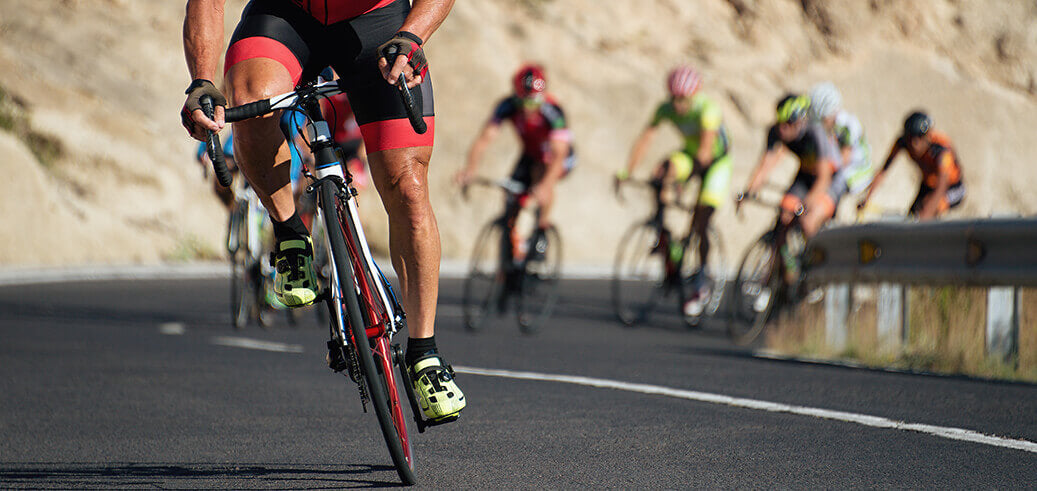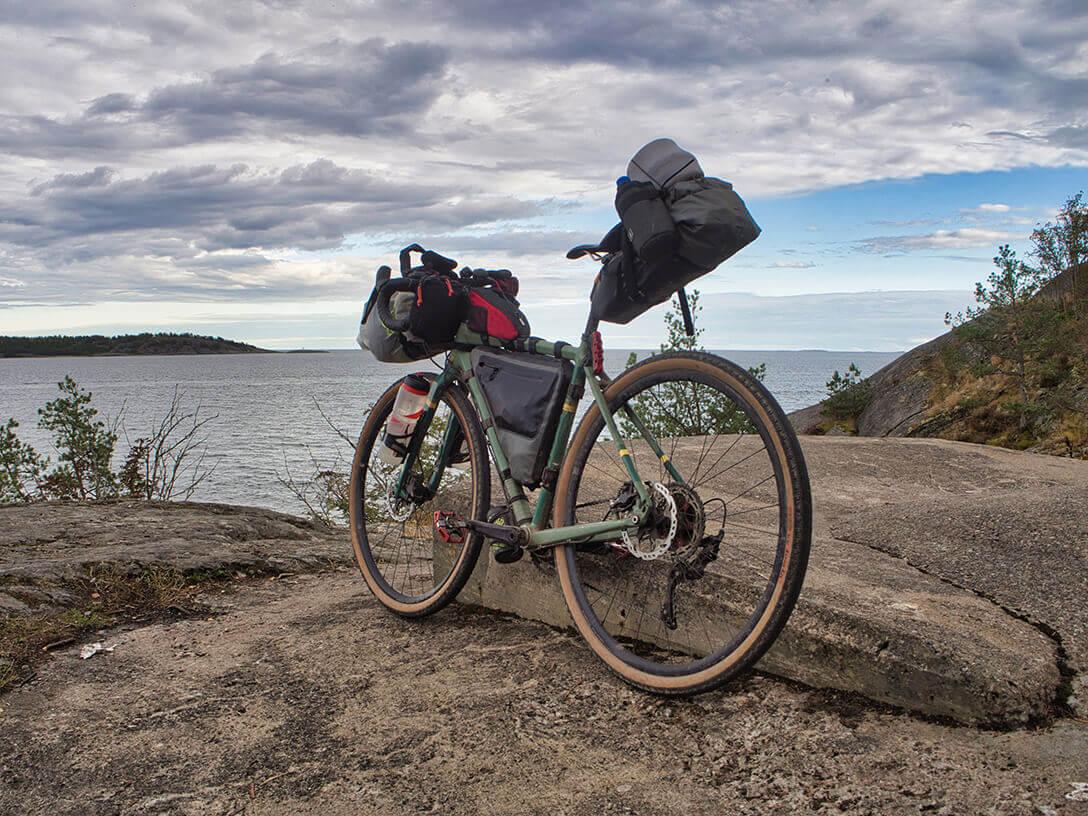Unlock the secrets to racing on bike, where precision, speed, and strategy converge. This guide offers practical insights tailored for both aspiring and experienced racers. Get ready to delve into race dynamics, bike optimization, and training tactics that will catapult you to the front of the pack without overwhelming with unnecessary details.
Key Takeaways
- Bike racing features various race types and cyclist categories that cater to different skill sets, with races such as road races, criteriums, time trials, and stage races, and categories ranging from beginner to professional levels.
- Selecting the right racing bike involves considering aerodynamics, frame materials, componentry including groupsets and brake types, and achieving the perfect bike fit for comfort and performance.
- Performing well in bike racing entails structured training plans, nutritional strategies, mental preparation, employing race day strategies like positioning and drafting, and ensuring regular bike maintenance and appropriate accessory use.
The Essentials of Bike Racing

When it comes to bike racing, one size certainly doesn’t fit all. The sport is as diverse as the riders who partake in it, with varying types of races that test different skills and competencies. Whether you’re navigating the challenging terrain of a mountain bike race or pushing your endurance to the limit in a road race, each type of race offers a unique thrill.
The excitement extends beyond the race types. Cyclists can participate in various categories, from beginner stages to professional levels, each governed by distinct rules and qualifications. So, whether you’re an eager beginner or seasoned professional, you’ll find a race category that aligns with your abilities.
Types of Bike Races
Bike races are as diverse as the riders themselves, each offering its unique set of challenges. Here are some types of bike races:
- Road races: test endurance and tactics over long distances on paved surfaces.
- Criteriums: short, fast-paced races on a closed circuit demanding speed, strategy, and cornering skills.
- Time trials: races against the clock, where aerodynamics and sustained power output are key.
- Stage races: consist of multiple segments or days of racing, with the overall winner determined by the lowest cumulative time.
No matter the race type, each one provides an exhilarating challenge of skill, strategy, and endurance.
Race Categories
In the world of bike racing, categories aren’t just about determining who you’re racing against; they’re about tracking your progress as a rider. In USA Cycling races, riders typically start at the beginner level (category 5) and can advance to higher levels with the acquisition of upgrade points. BMX racing categories are specialized by:
- age
- gender
- proficiency
- wheel size
This allows riders to progress from Novice to Intermediate and Expert as they accumulate wins.
No matter your current category, each race brings you one step closer to heightened competition.
Essential Racing Skills
Bike racing extends beyond mere fast pedaling; it demands strategic gameplay and a broad skillset. The art of strategic positioning, proficient cornering, mastering ascents, and maintaining high speeds on flat terrains, each aspect significantly impacts a racer’s performance, especially when competing in road racing events like the Continental Grand Prix.
Positioning in the peloton, or the main group of riders, is a fine art that can save energy and make the difference between winning and losing. Effective positioning in windy conditions, such as staying on the protected side of the pack when exiting corners, is a valuable skill in energy conservation. Adding to that, bike handling skills are particularly crucial in a sprint finish, where maneuvering within the pack at high speeds can prevent crashes.
Mastering these skills via on-bike training and off-bike exercises can not only improve your racing performance but also elevate your enjoyment of the sport.
Choosing the Right Racing Bike

Much like a painter requires an appropriate brush to craft a masterpiece, a racer needs the perfect bike to shine in a race. The right racing bike, or road bike, is an amalgamation of performance, aerodynamics, and comfort, each playing a crucial role in a cyclist’s race victory. Aero road bikes are designed for speed, with aerodynamic tube shapes and wind-tunnel-tested designs that minimize aerodynamic drag and rolling resistance, making them the choice of many pro cyclists.
However, selecting the ideal racing bike extends beyond merely choosing the most aerodynamic model. Factors such as intended use, preferred riding position, and budget should be considered. Components like carbon wheels can significantly impact performance. While they come at a higher cost, carbon wheels are favored for their light weight, stiffness, and aerodynamic design, making them a popular choice among professional cyclists.
Frame Material Options
Choosing the frame material is one of the most significant choices when selecting a racing bike. Carbon fiber, aluminum, and steel each offer unique benefits. Carbon fiber allows for aerodynamic optimization, which is a must for high-speed competitions. However, their durability can be compromised under excessive stress.
Aluminum frames are favored for their light weight and stiffness, aiding performance in road and mountain biking. On the other hand, steel frames offer a smooth ride quality due to their strength and ability to absorb bumps, making them ideal for long rides. Ultimately, the choice depends on your personal preference and the specific requirements of the race.
Groupsets and Gearing
The groupset, encompassing all the mechanical parts of a bike, has a substantial impact on a racing bike’s performance. Major groupset manufacturers like Shimano, SRAM, and Campagnolo offer a range of options from entry-level to high-end designs tailored for racing performance. Advanced features such as electronic shifting and improved materials enhance both durability and overall cycling performance.
Ensuring closely spaced gear ratios allows riders to maintain their optimal cadence across various terrains, crucial for racing efficiency and performance. Regardless of the choice, compatibility among groupset components is vital for seamless operation and integration.
Brake Types: Rim vs. Disc
The type of brakes you select can considerably influence your racing performance, specifically in terms of stopping power. While rim brakes are lighter and have been the traditional choice for racing bikes, hydraulic disc brakes offer improved braking performance in wet conditions and on descents. Despite being lightweight, rim brakes can underperform in wet conditions.
On the other hand, disc brakes, with their superior stopping power and enhanced control, are increasingly popular in racing. The choice between caliper brakes (rim brakes) and disc brakes depends on your specific racing conditions and personal preferences.
Bike Fit and Comfort

A perfect bike fit goes beyond comfort; it’s about guaranteeing optimal power transmission and aerodynamics, both of which are vital for a racing bicycle. Endurance road bikes often come with built-in features for added comfort, such as micro-suspension systems or specialized seat posts and front ends.
Distinct racing bike models like the TRIGON RC1-D, HC01-D, and canyon bikes are tailored for different racing conditions, including gravel bikes, offering:
- Better geometry for climbing
- More aerodynamic tubes
- Lighter weight
- Higher stiffness
- Specific wheelsets and tires for performance.
Saddle Selection
The right saddle can make the difference between a comfortable ride and a painful one. When selecting a saddle, consider the following factors for comfort and performance:
- Width: Choose a saddle that corresponds to your sit bone width to prevent chafing and support the desired riding position.
- Shape: Look for a saddle that matches your riding style and body shape.
- Cut-outs or central grooves: Some saddles have these features to relieve pressure on sensitive areas.
- Women’s-specific saddles: These saddles are designed with unique shapes and padding to account for anatomical differences.
Considering these factors will help you find a saddle that is comfortable and supportive for your rides.
As comfort is subjective, testing various saddle models is crucial before making a final decision.
Handlebar Setup
A well-setup handlebar not only ensures optimal control but also contributes to comfort and reduced fatigue over long distances. Here are some key considerations:
- The width should match the width of the rider’s shoulders for the right balance between aerodynamic positioning and comfortable handling.
- The angle can be adjusted for comfort, ensuring the lowest part is parallel or slightly downward.
- Brake lever position should be set for easy reach from the drops and the hoods.
A well-setup handlebar allows the rider to maintain a natural head position to avoid neck stiffness and reduces palm and hand pressure.
Pedal and Cleat System
The pedal and cleat system you choose can significantly impact your comfort, efficiency, and performance. Road cycling pedals often employ cleats with a 3-hole design, offering a wider area for force distribution and a secure connection. For mountain biking, a 2-hole cleat design known as SPD is more common, allowing for comfortable walking while still providing easy pedal engagement.
Clipless pedals enhance control and increase pedaling efficiency by firmly securing the cyclist’s feet to the pedals, although they necessitate practice to master engagement and disengagement.
Training and Preparation for Bike Racing

The journey to bike racing triumph involves disciplined training, appropriate nutrition, and mental readiness. Pre-race preparation, which encompasses training, sufficient rest, and proper nutrition, is crucial for a cyclist’s performance regarding race tactics and positioning.
While physical fitness is an essential aspect, race day is as much about mental toughness, focus, and resilience.
Building a Training Plan
Every successful bike racer relies on a well-structured training plan as their foundation. It starts with setting clear goals, such as improving specific cycling skills, placements in races, or increasing distance endurance. Identifying the exact type of fitness needed to meet these goals—long steady power for endurance or short intense bursts for sprints—is crucial.
Establishing a support network of training partners and group rides, or engaging with virtual platforms, can enhance motivation during training. Incorporating strength training targeting cycling-relevant muscles like quads and glutes contributes to performance enhancement and injury prevention.
Nutrition and Hydration
Optimal racing performance relies heavily on proper nutrition and hydration, just as it does on physical training. Cyclists need to meet their daily caloric intake, focusing on nutritious whole foods. A cyclist’s diet should prioritize macronutrient intake, aiming for 1.2-1.4 grams of protein and 6-10g of carbohydrates per kilogram of body weight, while consuming healthy unsaturated fats and avoiding fatty foods during training to prevent stomach distress.
During rides, especially long ones, quickly digestible carbohydrates are essential for peak performance, with 60-90 grams per hour being the general recommendation.
Mental Preparation
Bike racing is a sport that demands as much mental fortitude as it does physical strength. Mentally tough athletes are guided by strong personal goals that provide motivation and help them persevere through discomfort and adversity. Racers can prepare their mind for race day challenges by employing a broad-to-narrow focus technique, enhancing mental readiness and reducing anxiety.
Developing comfort with group dynamics and building mental strength for climbs, especially during mountain stages, are specific pre-race strategies that can boost a racer’s confidence.
Race Day Strategies
Race day is the culmination of all the effort, training, and preparation. From pacing and energy conservation to positioning, drafting, and sprinting, the implementation of race strategies requires understanding your strengths and weaknesses as well as those of your competitors.
Pre-race bike checks and last-minute adjustments can prevent mechanical issues that could sabotage race performance. Checking the weather and adjusting tire pressure and choice of accessories accordingly can provide a competitive edge.
Pacing and Energy Conservation
Pacing is a critical aspect of bike racing. It requires knowledge of one’s abilities and the discipline to ride more slowly at the beginning to ensure a strong finish and complete the race efficiently. Energy conservation in bike racing involves rationing resources such as fuel (glycogen), fluids, and effective heat regulation throughout the event.
Starting out at a moderate pace in longer races enables cyclists to stay hydrated and nourished, which conserves energy for the latter part of the race.
Positioning and Drafting
The art of positioning and drafting are key elements in bike racing. Drafting, or riding in another cyclist’s slipstream, can save more than 20% of energy, providing a significant advantage in overall time. Efficient positioning such as getting handlebars in front of other riders and using body positioning is required to move up in a group without aggressive contact.
In a sprint finish, positioning is crucial; being too far back or too close to the front can impede a cyclist’s final sprint effort.
Sprinting and Finishing Strong
A strong finish is the ultimate goal of every bike racer, especially in prestigious events like the Tour de France. In a sprint finish, keeping a close watch on rival sprinters and being prepared to react to their moves is essential for a successful sprint finish.
Carbon fiber frames and carbon fork for racing bikes are preferred by many racers due to their professional strength-to-weight ratio, beneficial for sprinters.
Bike Maintenance and Upkeep
The upkeep of your racing bike holds equal importance as your race training. Regular maintenance ensures optimal performance and extends the lifespan of your bike. This includes:
- Regular cleaning
- Lubrication
- Component checks
- Timely replacements of parts like brake pads, chains, and cables.
Cleaning and Lubrication
A clean bike equates to a well-performing bike. Regular cleaning not only keeps your bike looking great but also extends its lifespan and ensures optimal performance. It’s advisable to clean your road bike monthly or every 20 to 25 rides, which is more frequent for mountain or cross bikes.
A proper cleaning setup includes two buckets of water with dish soap, brushes, sponges, and rags, with the bike ideally placed on a workstand.
Tire Care and Selection
The significance of tire care, a frequently neglected aspect of bike maintenance, to your racing performance cannot be overstated. Regular checks for tire wear and maintaining proper tire inflation are crucial for optimal tire care. Correct tire pressure is essential for racing performance, affecting the tire’s contact patch and stability, and preventing potential overheating.
Choosing the right tires, such as slicks for dry conditions and tires with deep grooves for wet conditions, significantly enhances performance in varying race environments.
Must Have Accessory: StrideCharge

In bike racing, the correct accessory can create a significant impact. That’s where StrideCharge comes in. As a must-have accessory for bike racing, StrideCharge is designed to keep you at the top of your game, ensuring you have everything you need for a successful race. The StrideCharge will allow you to mount your phone to your bike and charge it wirelessly.
Component Checks and Replacements
Frequent inspection and replacement of bike components are essential for the bike’s performance and the rider’s safety. Replace brake pads when there’s 1 millimeter or less of material left, utilizing a wear indicator or visible grooves on the rim or disc rotor as guides.
Regular checks and replacements of components such as brake pads, chains, and cables are critical for a bike’s performance and rider safety.
Summary
Through this comprehensive guide, we have journeyed through the thrilling world of bike racing. From understanding the different types of races and the skills they demand, to choosing the right racing bike, achieving a perfect fit, training effectively, strategizing for race day, and maintaining your bike, we’ve covered the essentials of bike racing. With this knowledge, you are now equipped to embark on your bike racing journey with confidence and passion.
Frequently Asked Questions
What is racing on a bike called?
Racing on a bike is called cycle sport, which includes different categories such as road bicycle racing, cyclocross, mountain bike racing, track cycling, BMX, and cycle speedway. It encompasses a wide range of competitive physical activities using bicycles.
Is bike racing a thing?
Yes, bike racing is a popular competitive activity where racers compete by riding multiple laps around a short course, typically 1.5-2 miles. This can last anywhere from 30-60 minutes.
How do you race a bike?
To race a bike, start at the gate and sprint around a track with jumps and turns until you cross the finish line before your competitors. Races typically last about 30-40 seconds.
Which bicycle is best for racing?
Consider a lightweight and aerodynamic bike designed specifically for racing. Aim for a model with high-quality components and a stiff frame to maximize performance.
What are the important factors to consider when choosing a racing bike?
When choosing a racing bike, consider the intended use, your riding position preference, budget, and the performance impact of components like carbon wheelsets. These factors will help you make an informed decision.




Leave a comment
This site is protected by hCaptcha and the hCaptcha Privacy Policy and Terms of Service apply.